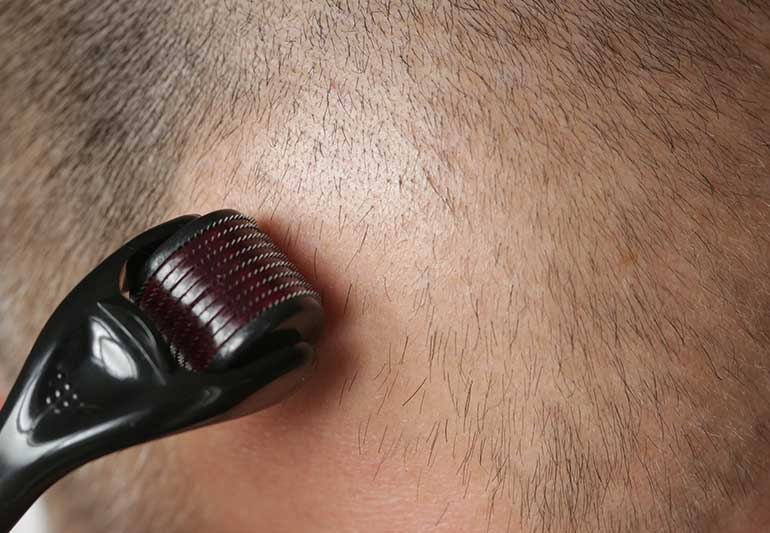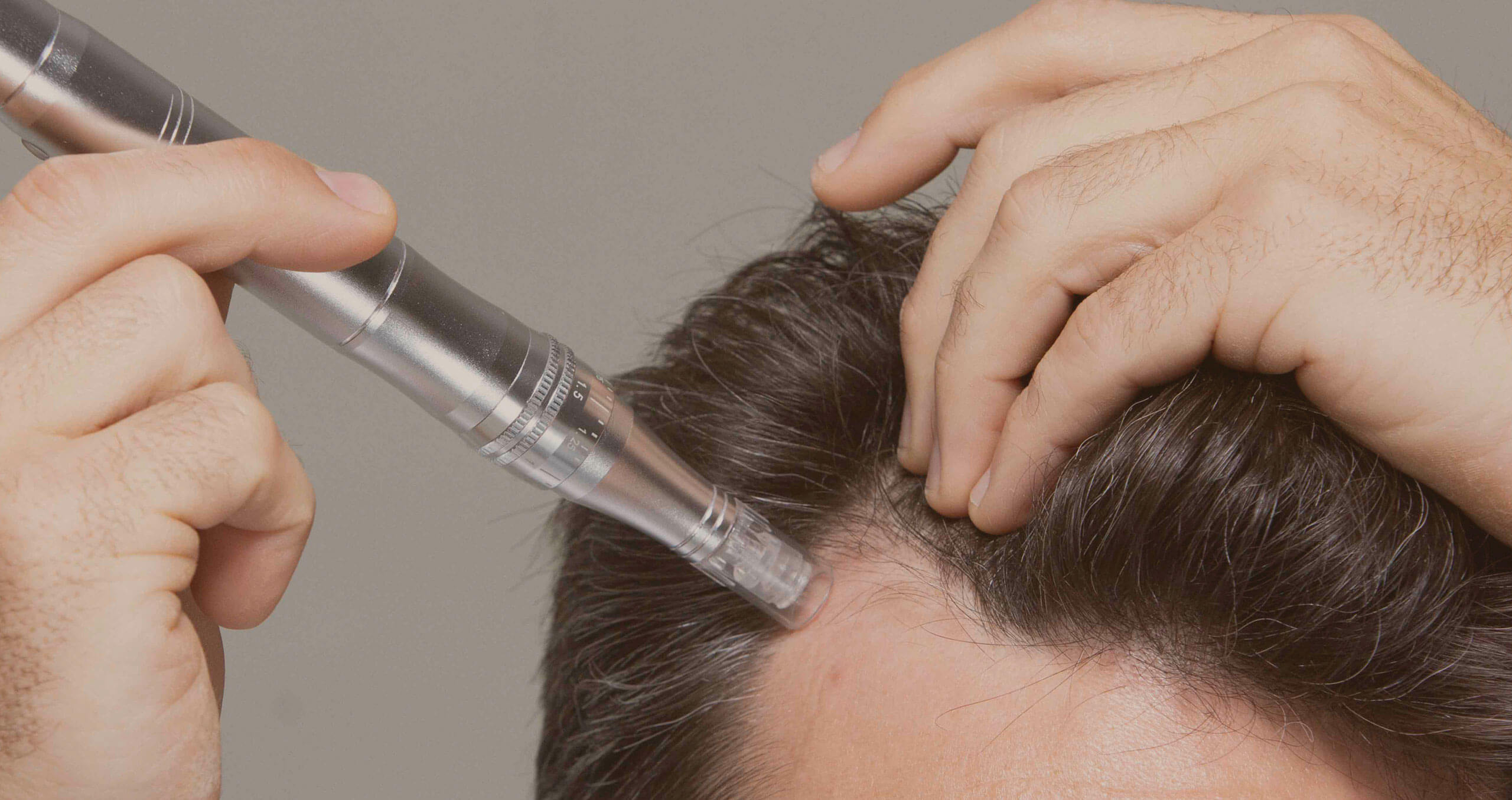It’s obvious that every woman’s dream is to be young and youthful forever but staying young for years is impossible. Once you get to your 40s, your skin doesn’t bounce back as it used to, you start seeing wrinkles and smile lines. We can’t stay in our 20s forever but we can slow down our aging process with a healthy lifestyle, a balanced diet and of course a proper skincare routine. Here, we provide you a list of top 10 best anti-aging treatments for 40s that will help you look glowing and youthful like how you were in your adolescence.
Retinoid
Retinoids are a class of chemicals that derive from vitamin A, and widely used in reducing wrinkles and fine lines on people’s skin which help people appear younger than their actual ages. By increasing the production of collagen and stimulating the production of new blood vessels in the skin, this substance does wonders in slowing the aging process and making age spots and softening rough patches of skin fade over time.
Many people go for retinoids when it comes to anti-aging skincare, thanks to their improvement of pigmentation marks, stimulation of collagen and elastin production, decrease wrinkles and fine lines, smoothing skin texture and fewer breakouts.
However, using retinoids might cause some minor reactions and inconvenience to your skin. The most common reaction in users is that their skin gets more sensitive under the sun as well as other reactions like dry skin, a sense of tingling and burning after applying it for the first time, or sudden inflammation or redness.

You can totally use retinol at home with prescriptions from professionals. There are many retinol skincare items on the market that you can check out like Obagi 360 with 0,5% retinol, the Ordinary retinol with 0,5% retinol.

Obagi 360 with 0,5% retinol

Ordinary retinol with 0,5% retinol
Chemical peels

A chemical peel is a solution applied to the face to remove dead skin cells and stimulate the growth of new cells which can improve the look of aging skin. There are 5 solutions for this method, glycolic acid, trichloroacetic acid, salicylic acid, lactic acid and carbolic acid.
As a typical anti-aging treatment can do, this method is extremely useful in reducing wrinkles and fine lines as well as skin pigmentation. You can also achieve smoother and more even skin after skin peeling.
Apparently, there are a few cons of this treatment that might occur to you like dry or even itchy and sore skin and certain irritations. And unfortunately, this treatment can not treat severe wrinkles completely.
Microdermabrasion

Microdermabrasion is a cosmetic procedure that involves fine crystals and a vacuum to eliminate dead skin cells. This procedure helps you reduce fine lines, minor scars, wrinkles and age spots, and make the skin smoother and younger looking.
This treatment for aging skin has many pros that many people have gained during and after the procedure. Microdermabrasion can work well on fine lines and wrinkles, dull-looking skin hyperpigmentation, age spots and brown spots. And unlike other remedies for aging problems, Microdermabrasion can get rid of stretch marks.
Everything has its pros and cons, so of course few inconveniences will happen to you if you decide to have this procedure. You might have irritations on your skin, redness and swelling. Sometimes, it even leaves you with bruises. But you don’t have to worry about it as these annoying skin reactions will go away within a few hours after the treatment.
Laser treatments
Another popular treatment for aging skin is lasers. They use focused light to safely and effectively help remove skin cells that are damaged by sun and aging. There are 4 major types of laser procedure, ablative, non-ablative, fractional and pulsed dye. Ablative treatment is the best for aging skin as it’s the most effective for aging skin as it removes old skin cells to reveal newer, more youthful cells.
Laser treatment is a modern treatment for many skin issues like wrinkles, scarring, and pigmentation irregularities. It helps you tighten skin, smoothen wrinkles, shrink pores and provide a more long-lasting result.
However, there are some drawbacks to laser treatments such as swelling, irritation, and hyperpigmentation temporarily and even potential scarring and color discoloration when not performed by professionals.
Dermal fillers

Dermal fillers are gel-like substances that get injected under the skin to create a smoother or fuller appearance, or both. This method, unlike treatments that have been listed above, is temporary since our bodies tend to break down and absorb the filler.
People go for this procedure because it does wonders in reducing wrinkles and fine lines and keeping your skin plump and firm since it stimulates collagen production. It’s also non-surgical which is important to many customers.
But the wonderful result that derma fillers provide does not last forever and there will be certain side effects like rashes, swelling, and even potential infection if it’s not treated with proper aftercare. Derma fillers literally bring you instant results so it’s obvious that this treatment costs more than the methods above.
Botox

Botox injections are shots that use a toxin to prevent a muscle from moving for a limited time. These shots are often used to smooth wrinkles on the face. And like dermal fillers, its results are temporary.
This procedure is approved by the FDA so you do not have to worry about its safety. Botox is a quick procedure, lasting only 30 minutes in total which includes the initial consultation and preparation. The injection only takes 10 minutes. It has no downtime after treatment, although there will be bruises on your skin that are totally coverable with concealers.
However, like derma fillers, you need to re-inject Botox to keep your wanted result and Botox will definitely limit some of your facial expressions.
Radiofrequency therapy

Radiofrequency (RF) therapy, also called radiofrequency skin tightening, is a nonsurgical method of tightening your skin that uses energy waves to heat the deep layer of your skin known as your dermis to stimulate the production of collagen.
This treatment is chosen by people with aging skin for its non-invasive procedure, the visible result after one treatment and little to no discomfort. Radiofrequency therapy is perfect for people with schedules as the length of treatment is short, you can do it after work or even during your lunch break.
There are also certain drawbacks of this method that you might experience like the requirement in several meetings for visible results but this is not common since most customers who get treated by radiofrequency always see the improvement after one meeting. And if you have Rosacea, you should skip it and move on with our next recommendations.
Platelet-rich plasma (PRP) therapy

PRP therapy is a treatment that involves injecting a concentrated serum derived from the patient’s blood into the skin to promote cell regeneration and collagen production which can slow down the aging process, reducing wrinkles and fine lines.
PRP utilizes the growth parts found in your blood, so your body won’t reject the substance or have any annoying reactions. It can also heal certain allergies, wounds and burns on your facial as well as body parts, making it extremely versatile for everyone.
However, this is one of the most expensive procedures on our list, so it’s very suitable and budget-friendly for many people. And its side effects like redness can last for days.
Hyaluronic acid

Hyaluronic acid is a naturally occurring substance in the skin that helps retain moisture and plump up the skin, reducing the appearance of fine lines and wrinkles. This is probably the second most popular treatment for aging skin after the use of retinoids.
People go for Hyaluronic acid since hyaluronic acid moisturizes the skin so well and helps to smooth it out, this also means that it can help to fight and lessen the appearance of wrinkles.
Since this substance can only moisturize, this is not the most ultimate way for aging skin, as HA can not help fading age spots or other aging issues.
Daily skincare routine
To achieve youthful, healthy, glowing skin even when you’re in your 40s or even 50s, a proper skincare routine in the early stage of the aging process is necessary.
This method has a variety of prices and products, making it so approachable. You can start early by using anti-aging eye creams to avoid wrinkles and lines around your eyes or face serum for anti-aging for other facial parts.
You can check out Essential Beauty hydrating facial serum if you’re looking for a product with HA and B5 or Larelia anti-aging cream to delay the process of aging. Radian fused anti-aging cream is also a pretty effective product for this issue as it contains vitamins A and C which can hydrate, brighten dark spots, marks and tighten your skin, prevent wrinkles and fine lines. In case you’re curious about these products’ reputations, you can read Radian fused anti-aging cream reviews and other products’ feedback on most online shopping websites. Most of them are quite positive, many clients can see their skin getting brighter and a reduction of wrinkles and fine lines after a month. However, some customers experienced some minor skin reactions like burns or tingling, which were totally normal as their skin is getting introduced to new substances for the first time.
Although this method is quite accessible, safe and effective, it usually takes the product at least a month to actually show some results, and sometimes, those results are not so visible, which might annoy many customers.

Essential Beauty hydrating facial serum

Larelia anti-aging cream

Radian fused anti-aging cream
After all, aging is totally normal and you should embrace your natural beauty, even when they’re full of flaws. Wrinkles and fine lines and other aging signs are what you earn after all the experiences, the hard work that you have been through so you shouldn’t be insecure about them. But if you want to look younger, it’s your choice and whatever you want to do or choose, we’re here to support you.




